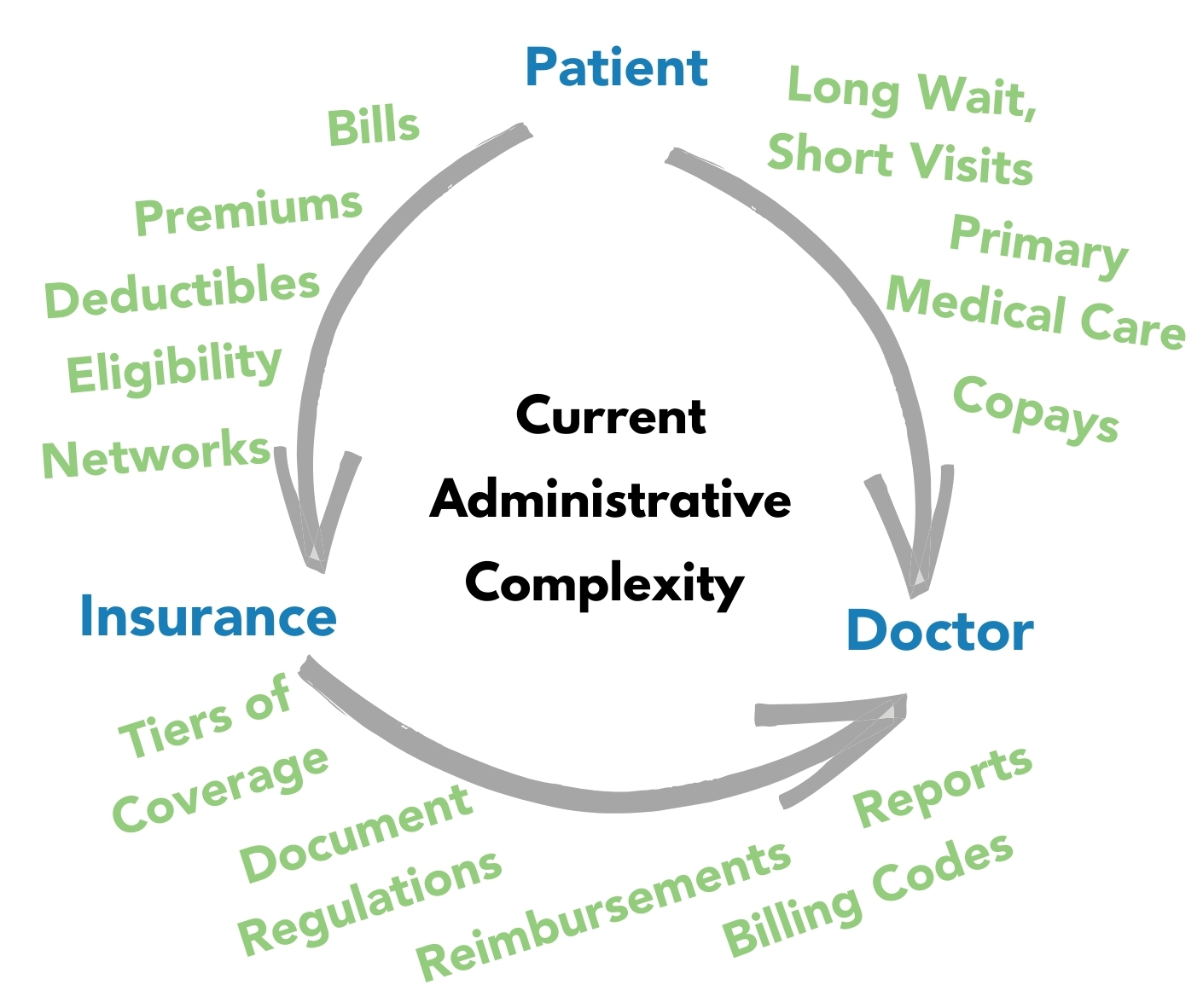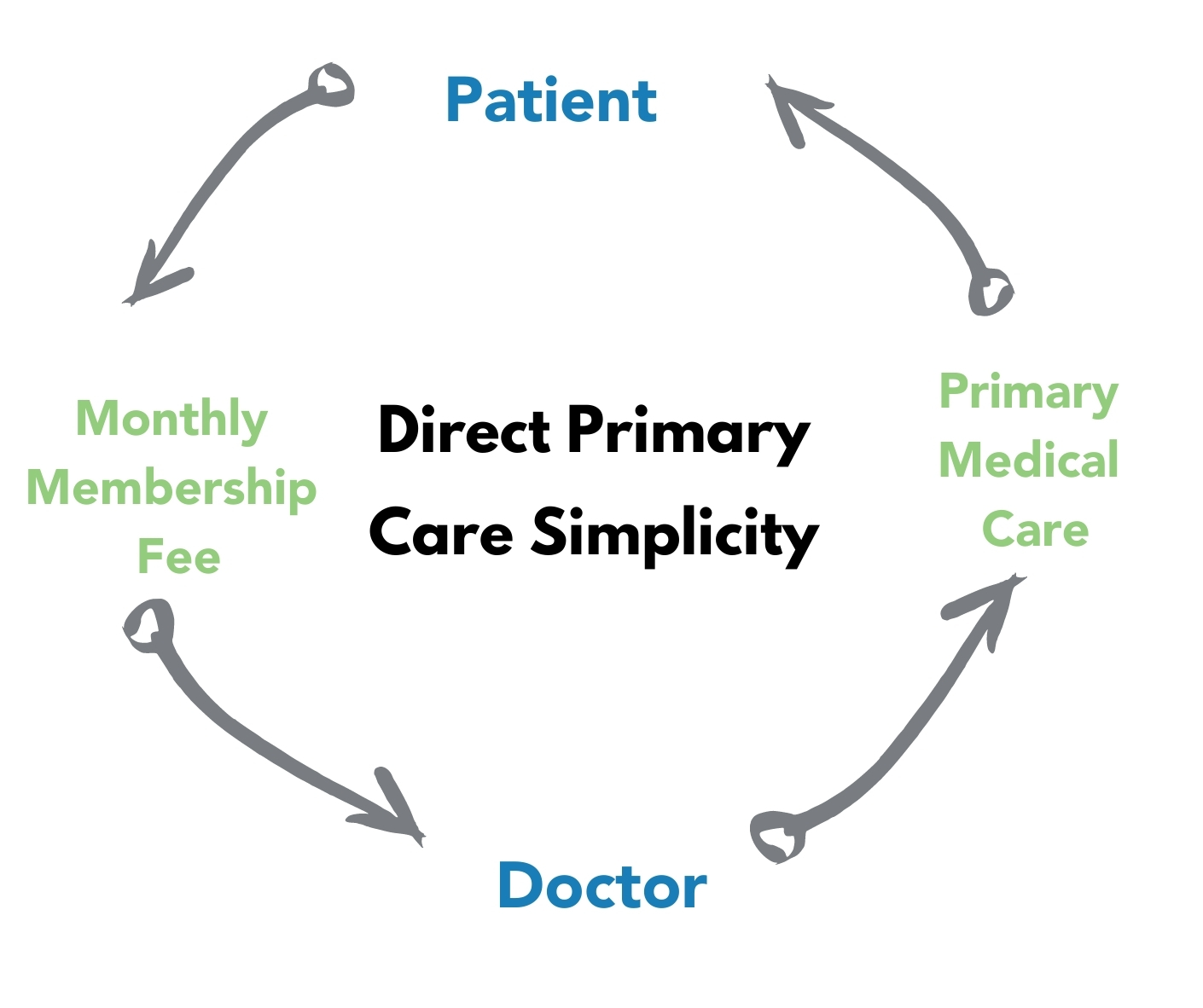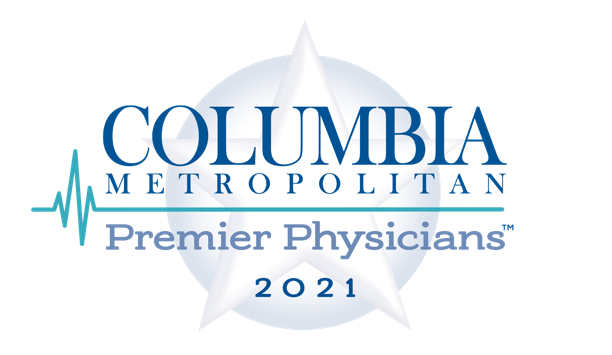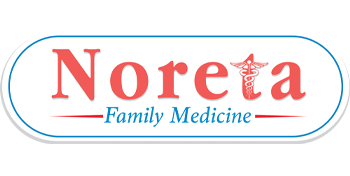Traditional Primary Care Complexity vs. Direct Primary Care Simplicity – In pictures!
This crazy complex graph shows the current “traditional” primary care system. If you wonder why the number of administrators has outpaced physician growth by 3000% in the past 50 years, look no further than this graph!
Let’s take a closer look at Doctor-Insurance connections. Doctors have to keep track of the tiers of preferred medicines they are allowed to prescribe for patients. If they choose the wrong one, they can add at least 30 min. of extra paperwork to the end of the day, and this causes delays in you receiving your medicine.

Many offices hire a staff member just to deal with these types of issues. Doctors have 10,000 billing codes to choose from and choosing the wrong one could mean you receive an incorrect bill—which is often bigger than it should be. Doctors have to send insurance companies quarterly reports about your health, which can be difficult if the doctor’s medical record system is not set up to run the requested report accurately.
Doctors have to negotiate reimbursement rates for services with insurance companies which leads to some doctors receiving better rates just because they are better negotiators. I don’t remember receiving any training in negotiations during medical school!
When writing chart notes, insurance companies task doctors with recording a certain number of exam details or using certain phrases to prove that they did enough during the visit to be paid for it. Let’s look at Patient-Insurance connections. As a patient, you are expected to pay your bill which comes in the mail at a random time, and may arrive 12 months after your doctor’s visit. You are expected to pay your insurance premiums.

You are tasked with finding out which doctors are in your insurance’s predetermined network of providers. You are not sure how much your primary care visit will cost because you’re unsure if you’ve met your deductible, and what that means. And of course, when shopping for insurance, you have to find out what plans you are eligible for.
What is the most important aspect of this graph to you as a patient? I would guess it is the “Primary Medical Care” connection between you and your doctor. Unfortunately, doctors are often forced to churn through patients in order to make enough money to stay afloat, so your wait is long and visits are short. You are also expected to pay a copay every time you visit a doctor’s office.
Take a step back and see if you can figure out what causes this graph to be so complex. It is the insertion of insurance into the process. Insurance is by nature administratively complex. Insurance companies make many rules that you and your doctor are bound to follow, or else there are financial and sometimes legal penalties.

For a refreshing change, let’s now look at a graph showing the difference with Direct Primary Care (DPC) (and Noreta Family Medicine). Yes, it’s just that simple. By removing insurance from the picture, you can remove 13 of the 15 spokes (that’s 87%!) from the original graph. Using a DPC model, Noreta Family Medicine focuses on the most important part of your primary care experience, the time you spend with your doctor. Noreta shows that essential primary care services are affordable without using insurance. The secret is that labs and medicines are often cheaper when you don’t use insurance. If you’d like to save your complicated insurance for complicated things, like surgeries and hospital stays, and have a simplified and personalized primary care experience, check out Noreta Family Medicine!
Have a good week! Feel free to contact me with any questions.
Melissa Boylan, MD, FAAFP
Family Physician and Owner of Noreta Family Medicine

